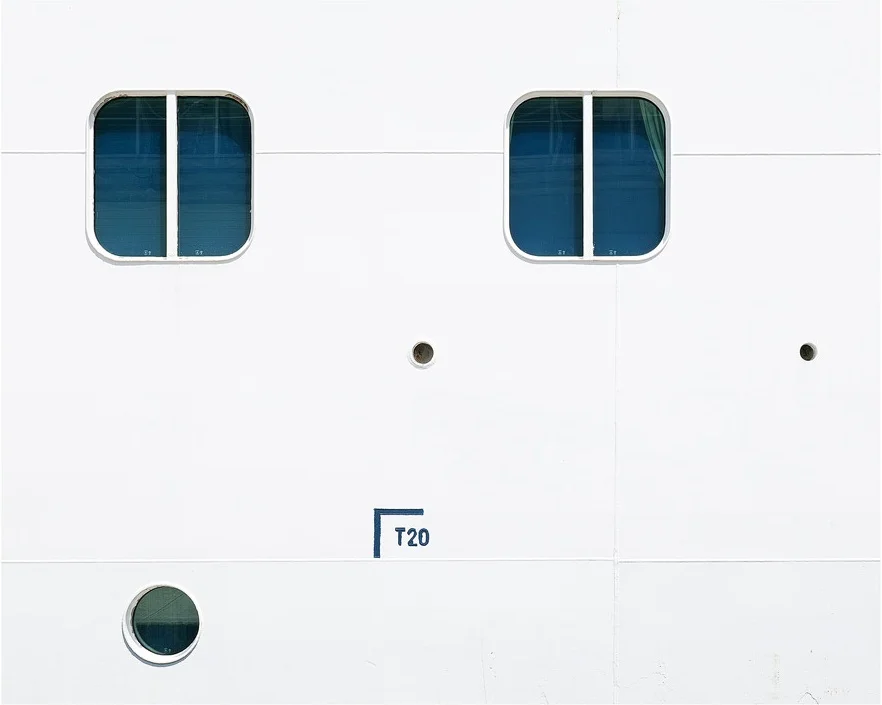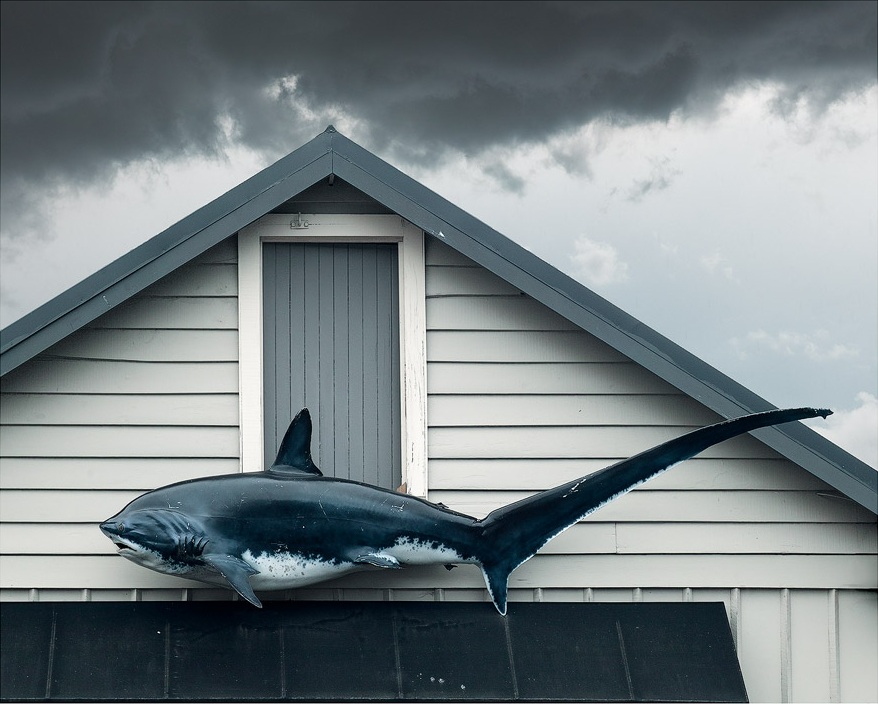I’ve decided to title this latest series Long White (all images here), not after New Zealand itself, but the cruiseliner we travelled on. I was born in Auckland, have returned many times over the years, but I found travelling this way offered a new and unique perspective. It also provided the opportunity to visit many ports and cities I otherwise would never have seen, such as Port Chalmers, Dunedin, Picton, Akaroa and so on.
Milford Sound offered mood in spades. It’s a South Island must-see.
Once more I aimed to look for the unique in the ordinary and seemingly banal. I’m constantly trying to refine my compositions down, to really simplify them to their most essential elements. It was an interesting journey. In fact, I found a lot of material in the ports themselves, the higher vantage point offered by our balcony provided a sort of aerial view.
There was plenty of visual interest in the ports, the cruiseliner we sailed on offering a high perspective.
Of course, a cruise is also the perfect way to see the sounds of the South Island. We travelled through Milford, Dusky and Doubtful. They are, as you would expect, extremely scenic, especially layered in mist and cloud, the sun breaking through sporadically. If you have never been to New Zealand, and especially the South Island, do make it a priority. There’s endless photographic material.
Finding a way to show the scale of Milford Sound and its towering peaks can be difficult.
Many would say light is the most important element of photography, but I disagree. For me, composition trumps all else, and while great light is nice, it’s not essential to making an interesting photograph. Unfortunately, composition is one of those elements of photography that’s hard to learn, hard to teach and ultimately in the eye of the beholder. I don’t think even in the space of a lifetime you could master it.
My favourite image of the trip, taken in Dunedin. The city itself was full of art and life.
In terms of equipment, I took the Sigma SD-H with the 50mm f1.4 ART and left the 24mm at home. I didn’t find I had need for a wider focal length, so I think the ‘one body, one lens’ idea will carry through from now on. I prefer it this way, getting used to the one focal length and not having to change lenses, to remove one more barrier or choice, of thinking, during a composition. The more I can minimise my gear and photography to its most essential elements, the better.
As usual, the Sigma performed extremely well. The weather sealing on the SD came in useful. For the first time I had to raise ISO during our trip through the sounds owing to the dark, wet, and windy conditions. It was a real test for both photographer and camera.
A tight crop of the image above showing the impressive detail the Sigma SD-H is able to capture.
I also find myself watching a lot of film channels, such as William Verbeeck’s, Negative Feedback and so on, and idolising many film photographers as well. I’m still tugged towards film from time to time, the tones and feel, so perhaps the next trip I will take both the Mamiya RB67 and the Sigma SD-H, to compare and try to settle this once and for all.
The colours here really say New Zealand to me, the green and black and white. I think the fact this crop means the word parlour has a sense of ambiguity about it.
Am I happy with this series? Yes and no. With Broken there was only ever one type of weather: real damn hot and bright as can be. In New Zealand, you could have four or five different weather systems in the space of an hour, the darker and moodier of which don’t work well with the usual post-processing treatment for these images. As such, I worked on the more traditional landscapes as if they were just that.
I guess cohesion is the issue. I wanted a cohesive look to the images, but they seem to be in two camps: modern minimal and LOTR eat-your-heart-out. Still, I’m happy with many of the final compositions. This observational style of photography has really opened up a world of possibility for me, because you don’t need to chase light, so to speak, nor seek out grand landscapes. You’re simply looking for anything of visual interest.
Where to next? I have no immediate plans, but stay tuned. You never know where I’m likely to pop up.
There were plenty of compositions to be found on the ship itself.
These striped pedestrian crossing poles are unique to New Zealand (I think), but it took me a while to find a suitable background for one.












